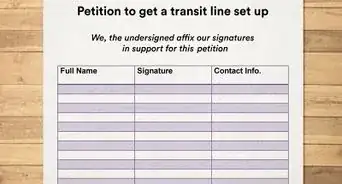This article was co-authored by wikiHow Staff. Our trained team of editors and researchers validate articles for accuracy and comprehensiveness. wikiHow's Content Management Team carefully monitors the work from our editorial staff to ensure that each article is backed by trusted research and meets our high quality standards.
There are 7 references cited in this article, which can be found at the bottom of the page.
This article has been viewed 30,493 times.
Learn more...
Trash on the beach can be unsightly, but when it washes into the ocean, it becomes life-threatening for marine wildlife and harmful to humans, too. If you're looking to make a difference, hosting a beach clean up is a great way to make the ocean safe and pleasant for both animals and people. You'll need to plan well and recruit volunteers that are just as passionate as you are, but the clean beach you see afterwards will be worth it all.
Steps
Choosing a Date and Recruiting Volunteers
-
1Choose a beach that's convenient and in need of a clean up. Go online or check in with your local parks and recreation department to see what beaches are most in need of help. You should also try to choose a spot that will be easy for volunteers to get to, with restrooms and easy parking available.[1]
-
2Pick a date that's in early spring or late fall. The best time to plan your beach clean up is either right before summer beach-going season, or right afterwards, so aim for a time around then if possible. Try to pick a day when your volunteers will be free, like on a weekend, and at a time when the beach will be empty, like early in the morning.
- Consult a tide chart as well; you can plan your clean up for when the tide is going out, giving you more ground to cover and trash to remove.
Advertisement -
3Get permission from local officials to hold your beach clean up. If you want to hold your clean up at a public beach, you may need to consult local parks and recreation offices about getting any permits that might be necessary. They can also let you know whether the area will be closed for any reason on your planned date.[2]
- If you're not sure who to contact about permits and permissions, call your local police station.
-
4Get volunteers by asking your network of friends and family. Ask all of your friends and family in the area if they'd be willing to participate, and post information on your social media as well. Ask your friends and family to spread the word to their friends, coworkers, and classmates to get even more participation.[3]
- Check your permits to see how many volunteers are recommended and whether there's a limit. Try to aim for at least 10 participants.
- Make a Facebook event so your volunteers can easily see event details and who else is going.
-
5Advertise through flyers and local newspapers. If you want to broaden your outreach strategy to an even bigger audience, put up flyers on bulletin boards at schools, local businesses, and parks. You can also send a press release to local publications to get the word out even more.
- Some ocean conservation organizations offer cleanup flyer templates you can use and edit to fit your own needs.
- To save paper, you can email your flyer as an attachment to local businesses and institutions.
-
6Register your event with an organization to increase outreach. Go online to find ocean conservation organizations that you can register your beach clean up with. They can offer resources to help you gather more volunteers and set up a successful clean up on the day of.
Organizing Supplies and Logistics
-
1Scout out the area a few days beforehand. Head to your clean up area 1-2 days in advance to plan out where you'll meet your volunteers and what areas you'll clean. You should also figure out where you'll leave your full bags of trash and recyclables, where your volunteers will park, and if you'll need to post any signs to help them find you.[4]
- You might be able to throw your trash bags in nearby dumpsters, or your local government agency might agree to come pick them up for you.
-
2Determine parking areas for your volunteers. Figure out the traffic patterns in the area by checking online traffic sites around the time you're planning on doing the clean up. Will there be lots of cars clogging up intersections? How easy will it be for your volunteers to get in and out?
- If the beach is supervised by your local city government, ask if they have parking restrictions or recommendations.
- If you think your volunteers will have trouble parking, find alternative solutions. Walk around nearby neighborhoods and look for available street parking, or ask your volunteers to carpool or take public transportation.
- No matter what, communication with your volunteers is key so they know what to expect.
-
3Load up on clean up supplies for your volunteers. You can ask your volunteers to bring their own supplies, but you can assume they won't have many of the necessary items. Order online or go to a local hardware or general store to get your supplies, and make sure to buy enough so that each of your volunteers has the item. Make sure to buy things like:[5]
- Recyclable, canvas, or burlap garbage bags
- Biodegradable protective gloves
- Sifters or rakes
- Trash sticks
- Sunscreen
-
4Buy water and low-waste snacks to keep volunteers' energy up. People will be much more excited to come to your event if they know that snacks will be provided. Bring along a full water cooler and ask them to bring their own reusable water bottles to fill up, as a way to reduce waste.[6]
- Look for healthy snacks that won't generate a lot of waste, like fruit or big bags of granola, crackers, or popcorn instead of individually-wrapped packets.
- If you don't have the funds for food, specify that volunteers should bring along their own snacks.
- Make sure to bring extra bags for volunteers to throw away their food waste.
-
5Organize an emergency plan, just in case. Write up a list of police and hospital phone numbers and driving directions to have on hand, and make sure that you can easily communicate with your whole group by cell phone or walkie-talkie. Bring along a basic first aid kit as well, so you can treat any cuts or bruises that volunteers may get.
- Tell volunteers not to in the water, but try to have someone on hand that's been trained in EMT and lifeguarding skills just in case. You can also review what you should do in case of a health emergency, like heatstroke or a broken bone.
- You should also look over your site for safety hazards like rocks, changing tides, roads, and power lines.
-
6Have your volunteers wear suitable, protective clothing. Ask that your volunteers wear closed-toe shoes that are waterproof, if possible, as well as extra layers like jackets in case it gets cold. Recommend that they bring sun protection, like sunscreen, hats, and sunglasses, since the sun reflecting off the water can intensify UV effects.[7]
- They can also bring their own protective gloves, although you should have some on hand as well. It's safe to assume that many of your volunteers won't have their own pair.
-
7Send out a reminder email 1-2 days before the event. Get in touch with all your volunteers a few days before the event to remind them of the date, time, and location. This is also a great time to pass on important information, like the weather outlook for the clean up day, parking instructions, and clothing recommendations.
- Tell your volunteers exactly where you'll meet them on the day of the clean up. If it's not easy to find, you could even provide a map or an exact address.
Running the Clean Up Smoothly
-
1Get to the site early. Arrive at least 30 minutes before your volunteers so you can prep your site. Set up a check-in station, post signs or posters, and check out the weather to send out last-minute updates. This will give you plenty of time to prepare so that you're relaxed and ready to go by the time your volunteers arrive.[8]
-
2Post signs to help volunteers find you. Put up signs with the name of your event in the parking area and the area where you'll meet your volunteers. Make sure they're big, legible, and securely fixed to tables or fences.[9]
- If you have a few latecomers and need to move to another location, write a note on a sign to tell them where you're going, or draw an arrow to show them where they can find you.
-
3Check volunteers in as they arrive. Set up a table with paper and pens for your volunteers to check in, or simply pass around a clipboard as they arrive. Ask them to write down their full name, email, and phone number. If you're working through a government or conservation organization, you might also need them to sign health waivers.
- You'll want their phone numbers in case you need to get in touch while at the clean up. It's good to have their emails as well so you can send out follow-up messages after the clean up is over.
-
4Give them instructions on where to clean up and what to pick up. Before your volunteers get started, give them instructions on where they should pick up trash, like any potentially hazardous areas to avoid, as well as what they can expect to pick up and tips on how to do so safely. Make sure they're all wearing protective gloves and have trash sticks and trash bags to use. Your volunteers can expect to pick up materials like:
- Plastic bags
- Bottles and cans
- Fishing gear
- Cigarettes
- Helium balloons
-
5Be careful of potentially hazardous items. Have your volunteers place dangerous materials in containers with tight, screw-on lids, rather than trash bags. This will keep them from poking through the material of a trash bag or leaking potentially dangerous fluids on other items. Some materials to look out for include:[10]
- Syringes, needles, or medical vials
- Pieces of broken glass
- Electronics
- Batteries
- Tires
- Paint
-
6Split your group in 2 and have them start on opposite ends of the beach. Give each group several trash bags, at least 1 for every 3-4 people and have them walk to opposite ends of the area you're cleaning. They'll walk towards each other while cleaning, ensuring that the whole beach is covered and that the group ends up together at the end.
- For an added incentive, you can set up a table of snacks and refreshments at the meeting point for the volunteers to enjoy when they finish.
-
7Have volunteers sort recycling from trash while they clean up. Ask your volunteers to sort out items that are recyclable in your area, like plastic, from materials that need to go to the landfill. Make sure each group has one designated recycling bag to make it easier.[11]
- You can mark the recycling bags with a label, or get them in a different color.
Finishing the Event
-
1Weigh the trash with a hook scale, if you can. It can be rewarding for you and your volunteers to see just how much trash you picked up. If you have a scale with a hook, use it to weight your trash bags. If not, you can use a standard conversion of 15 pounds (6.8 kg) per trash bag to estimate the the weight of the trash.[12]
-
2Throw trash in a specified dumpster or container. Once your group has reassembled, gather everyone's trash together in as few bags as you can. Take it to your designated disposal area, whether that's a dumpster or an area where it can be picked up and taken to a landfill.[13]
-
3Clean up your materials and any trash left behind. You can invite your volunteers to stay for awhile to talk and enjoy refreshments, but don't forget to clean up your materials and any last pieces of trash before you go. Ask your volunteers to help so it goes faster.
- Remember to grab any posters you put up in other areas as well.
-
4Take a picture of the whole group to post and share. Before your volunteers leave, remember to get a group picture that you can share on social media or with press. This is a great way of saying thank you to your volunteers while inspiring others with your clean up efforts!
- Decide on a designated hashtag for your event, like #PacificBeachCleanUp2018. Invite your clean up team to post their own pictures with the hashtag so you can easily find them.
-
5Send out a thank-you text or email. A day or so after your event, send out a brief email or text thanking your volunteers for showing up and helping out. This is a great way to show them your gratitude and remind them of the great impact they made.[14]
- You can also include a few details from your beach cleanup, like how much trash you picked or the strangest piece of trash someone found.
Example Beach Clean Up Advertisements
Community Q&A
-
QuestionWhat would be a suggested time in the morning to start the beach clean up?
 DanielleCommunity AnswerIt would be best not to start your beach clean up too early; the sun may not be up, and volunteers would rather be sleeping. I would recommend around 9:00 for the starting point.
DanielleCommunity AnswerIt would be best not to start your beach clean up too early; the sun may not be up, and volunteers would rather be sleeping. I would recommend around 9:00 for the starting point. -
QuestionDo we need permission to clean my beach?
 AbbykidCommunity AnswerIt is not mandatory but it can be helpful to let the local council know, as then you can have them pick up the trash bags and might give you advice about restrictions and hazards, or where to leave the filled bags.
AbbykidCommunity AnswerIt is not mandatory but it can be helpful to let the local council know, as then you can have them pick up the trash bags and might give you advice about restrictions and hazards, or where to leave the filled bags.
Things You'll Need
- Recyclable, canvas, or burlap garbage bags
- Biodegradable protective gloves
- Sifters or rakes
- Trash sticks
- Closed containers for hazardous items
- Sunscreen
- Water cooler
- Low-waste snacks
- First aid kit
- Walkie-talkies (optional)
- Posters
- Tape
- Check-in sheets
- Pens
- Table or clipboard
- Hook scale (optional)
References
- ↑ https://www.neefusa.org/nature/land/tips-organizing-beach-clean
- ↑ https://www.neefusa.org/nature/land/tips-organizing-beach-clean
- ↑ https://www.neefusa.org/nature/land/tips-organizing-beach-clean
- ↑ https://oceanconservancy.org/trash-free-seas/international-coastal-cleanup/start-a-cleanup/before-the-cleanup/
- ↑ https://www.neefusa.org/nature/land/tips-organizing-beach-clean
- ↑ https://oceanconservancy.org/trash-free-seas/international-coastal-cleanup/start-a-cleanup/before-the-cleanup/
- ↑ https://www.surfrider.org/coastal-blog/entry/solo-beach-cleanup-guidelines
- ↑ https://oceanconservancy.org/trash-free-seas/international-coastal-cleanup/start-a-cleanup/during-the-cleanup/
- ↑ https://oceanconservancy.org/trash-free-seas/international-coastal-cleanup/start-a-cleanup/during-the-cleanup/
- ↑ https://www.pacificbeachcoalition.org/cleanup-guidelines/
- ↑ http://www.onegreenplanet.org/environment/organize-a-beach-clean-up-this-summer/
- ↑ https://oceanconservancy.org/trash-free-seas/international-coastal-cleanup/start-a-cleanup/during-the-cleanup/
- ↑ http://www.onegreenplanet.org/environment/organize-a-beach-clean-up-this-summer/
- ↑ https://oceanconservancy.org/trash-free-seas/international-coastal-cleanup/start-a-cleanup/after-the-cleanup/
About This Article
To organize a beach cleanup, first choose a date right before or after peak season. Then, contact your local government to fill out any necessary permits on the beach you want to clean. Recruit volunteers from your network and advertise in local publications, then buy supplies like gloves and recyclable trash bags for your volunteers to use. At the event, split your group in half, then have them start at opposite ends of the beach and meet in the middle. For more tips on hosting a great beach clean up, like dealing with dangerous items, read on!

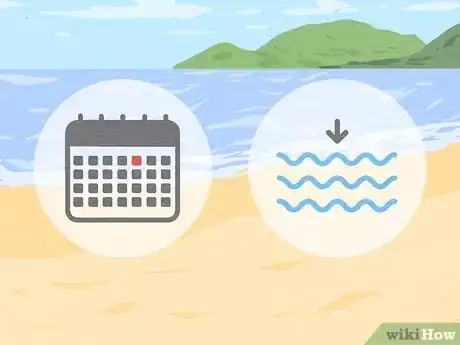


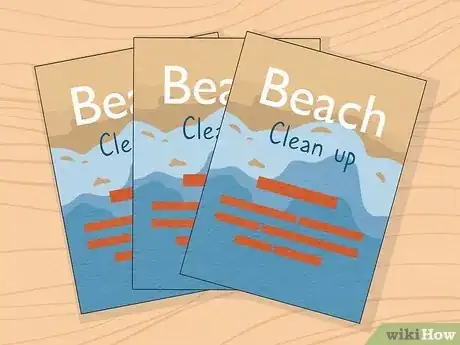
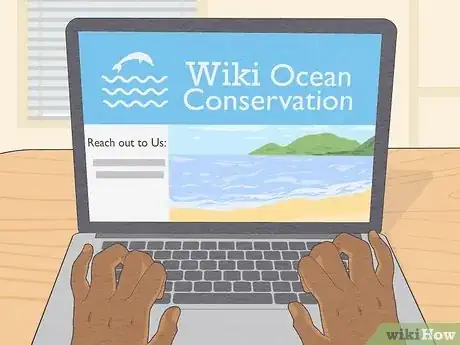
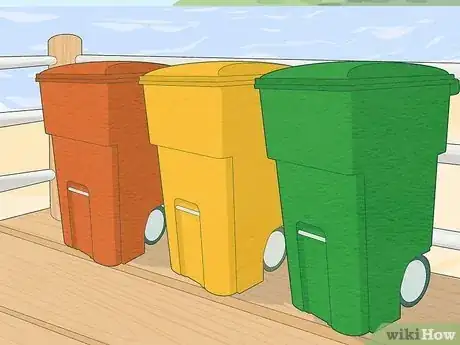

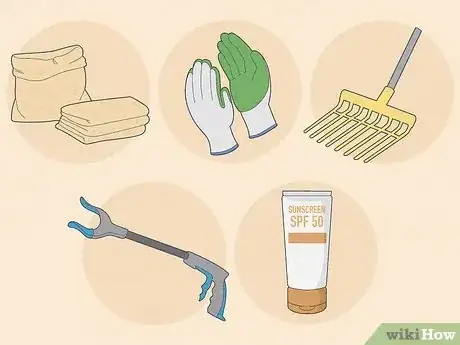
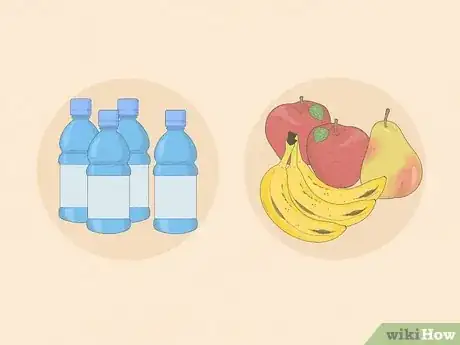
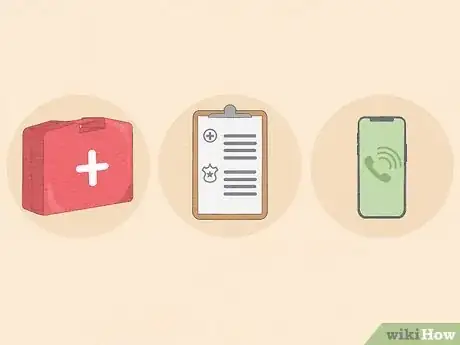
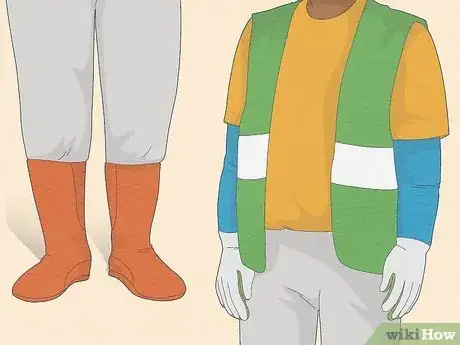
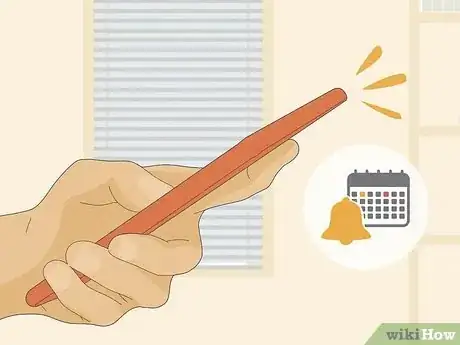
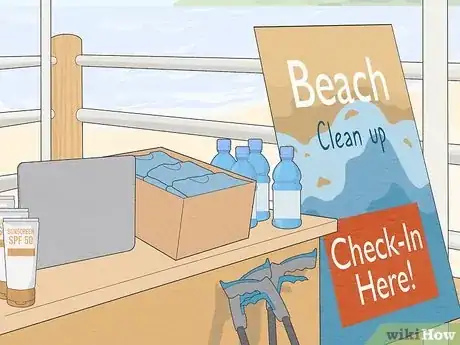
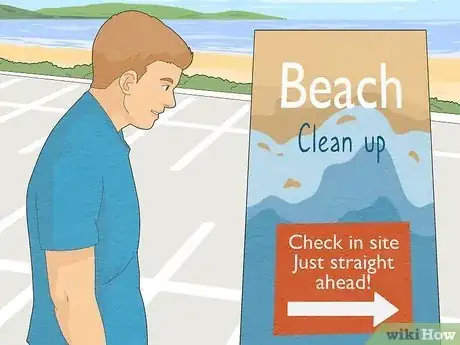
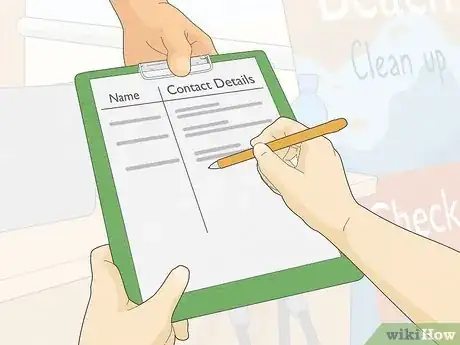
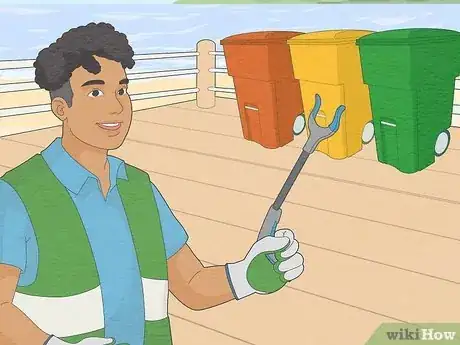
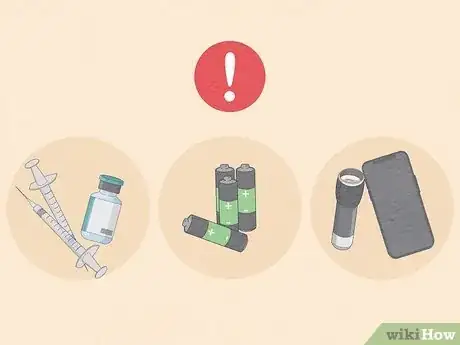
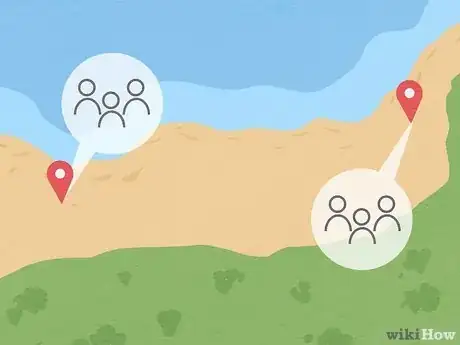

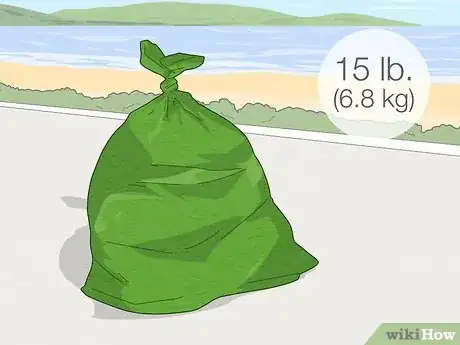
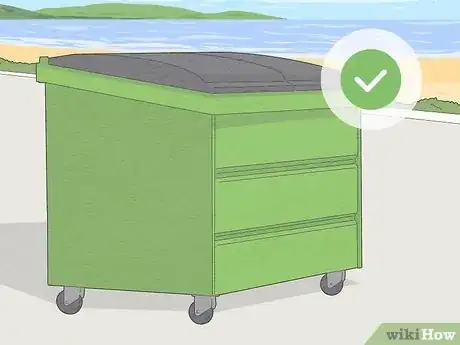
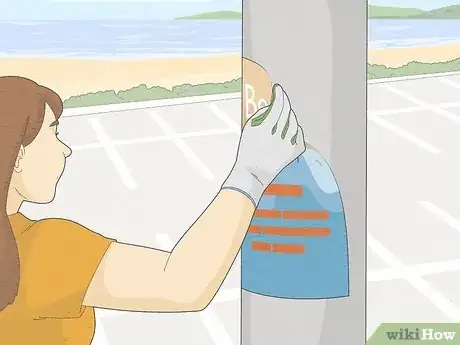
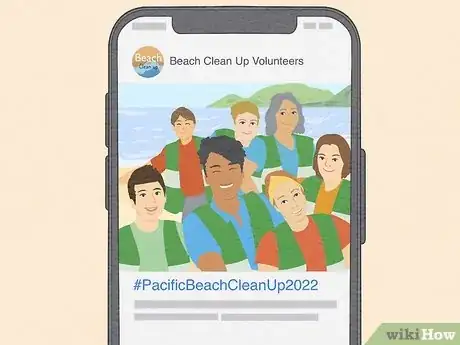
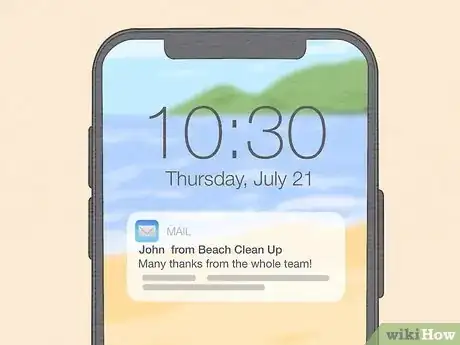

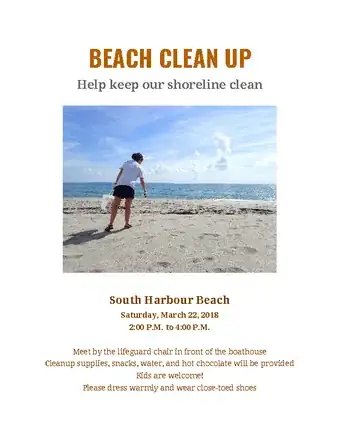



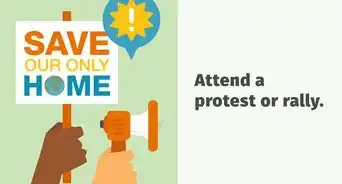



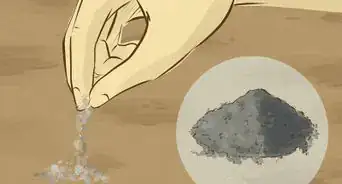
-Step-14-Version-6.webp)
